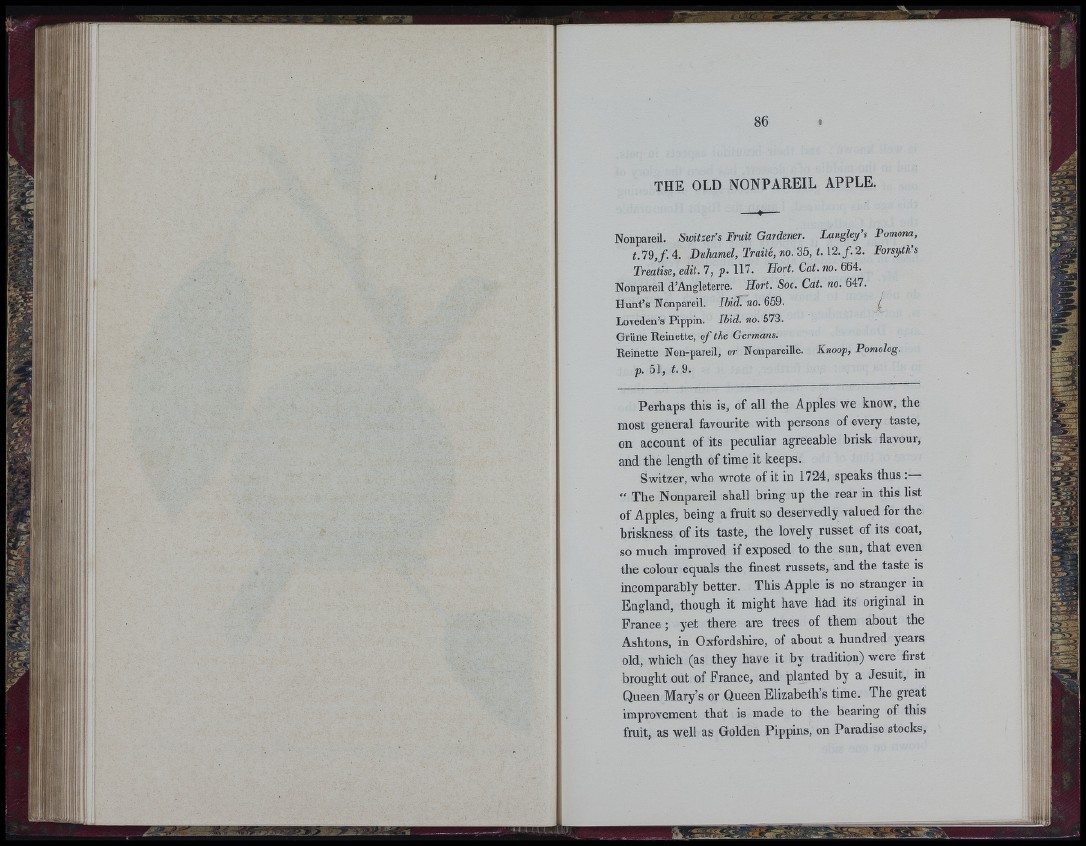
THE OLD N O N PA R E IL A P PL E .
Nonpareil. Switzer’s Fruit Gardener. Langley’s Pomona,
t. 79, f . 4. Duhamel, Traité, no. 35, 1 .1 2 ./. 2. Forsyth’s
Treatise, edit. 7, p . 117. Hort. Cat. no, 664.
Nonpareil d’Angleterre. Hort. Soc. Cat. no. 647.
Hunt’s Nonpareil. Ihidd. no. 659.
Loveden’s Pippin. Ihid. no. 573.
Griine Reinette, of the Germans.
Reinette Non-pareil, or Nonpareille. Knoop, Pomolog.
Perhaps this is, of all the Apples we know, the
most general favourite with persons of every taste,
on account of its peculiar agreeable brisk flavour,
and the length of time it keeps.
Switzer, who wrote of it in 1724, speaks th u s :
“ The Nonpareil shall bring up the rear in this list
of Apples, being a fruit so deservedly valued for the
briskness of its taste, the lovely russet of its coat,
so much improved if exposed to the sun, th a t even
the colour equals the finest russets, and the taste is
incomparably better. This Apple is no stranger in
England, though it might have had its original in
F ran c e ; yet there are trees of them about the
Ashtons, in Oxfordshire, of about a hundred years
old, which (as they have it by tradition) were first
brought out of France, and planted by a Jesuit, in
Queen Mary’s or Queen Elizabeth’s time. The great
improvement th a t is made to the bearing of this
fruit, as well as Golden Pippins, on Paradise stocks,
iii n l
I i ll
111,
. ¿ r a ,.- ’.v.-,,, .,L7 , a - a—